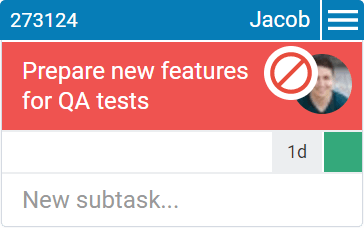The efficiency of your team’s workflow is among the most important metrics in Lean management. Measuring it is crucial for determining whether you are implementing the model successfully.
Tracking precisely your workflow efficiency can be extremely easy and will show you exactly where your weaknesses are and how they affect your team's results.
What Is Flow Efficiency in Lean?
Flow efficiency is the ratio between value-adding time and the lead time required to complete a process. Value-adding is when a person or a machine is actively working towards the completion of a given target. Lead time is the frame between the order and delivery of the product.
Tracking your team's workflow efficiency is crucial for optimizing the whole process.
Following this line of thought, the typical non-value-adding time activity and one of the seven wastes in Lean management is waiting on something. It can be separated into two categories:
Wait time is accumulated when a task is waiting on something that doesn’t depend on the person working on it. The most typical example of generating wait time in Kanban is when a card is awaiting someone to review it before moving on to the next column of the Kanban board. On the other hand, blocked time is generated when an assignment gets stuck somewhere in the workflow, and there is something that’s in the way of resuming work.
On the other hand, blocked time is generated when an assignment gets stuck somewhere in the workflow, and there is something that’s in the way of resuming work.
Block reasons can range from waiting on personal capacity (usually because another task requires immediate attention) to waiting on a repair team to fix a hardware/software issue.
The major difference between these two types of waste is whether the inactive time is expected or not. If it is expected, you should consider it a wait time. If not, then the task accumulating it is considered blocked.
Knowing how much time goes to waste waiting on something gives you insights about where you need to improve your process for greater Lean efficiency.
How to Measure Flow Efficiency?
If you are a new leader to Lean management, measuring flow efficiency might seem like a difficult task. In reality, it is done with the help of this simple formula:
Flow Efficiency[%]=Value-added Time/Lead Time*100
Explaining it practically, if one of your software engineers needs 5 days to complete a feature, but she spends only one day actively working on it, then the flow efficiency of developing this particular feature is 20%.
Calculating this by hand for every task that passes through your team's workflow will create more waste than value for every leader that applies the Lean management model.
This is especially true when you have to account for every factor that affects it. Thankfully, with digital Kanban software, you can track flow efficiency without dedicating much of your time to this activity.
Tools for Calculating the Flow Efficiency in Kanbanize by Businessmap!

With the help of our project portfolio management platform, you can monitor flow efficiency directly on the Main dashboard with the help of a specifically designed widget. It is highly customizable, and you can get a quick overview of the efficiency stats you wish to track. Besides, you’ve got at your disposal an actionable chart that will measure your workflow efficiency in more detail.
Besides, you’ve got at your disposal an actionable chart that will measure your workflow efficiency in more detail.
It can be an invaluable weapon in your toolbox to achieving Lean efficiency in your work processes. The chart will automatically gather data from every card that passed through your Kanban board during a time frame of your choice, accumulate the overall flow efficiency for the period, and visualize the results.
A significant benefit of using a digital solution is that you have a wide range of workflow filters at your disposal. You are also at liberty to include or exclude additional factors such as blocked time of cards. The same applies to different stages of your team’s workflow.
This way, you can monitor different aspects of your flow’s efficiency with just a few clicks and gather data about where you need to improve.
As a result, you will be able to identify redundant stages of your workflow or reassure yourself that new steps are needed for the sake of boosting the Lean efficiency and, ultimately, the performance of your process. Nonetheless, you will be able to track your team's personal efficiency levels and learn more about their strengths and weaknesses.
We offer the most flexible software platform
for outcome-driven enterprise agility.
In Summary
Flow efficiency is the ratio between value-adding time and the lead time. Measuring it will help you:
- Understand whether you are improving or not
- Visualize how much time goes to waste waiting on something
- Get insights where you need to improve your process





 On the other hand, blocked time is generated when an assignment gets stuck somewhere in the workflow, and there is something that’s in the way of resuming work.
On the other hand, blocked time is generated when an assignment gets stuck somewhere in the workflow, and there is something that’s in the way of resuming work.
 Besides, you’ve got at your disposal an actionable chart that will measure your workflow efficiency in more detail.
Besides, you’ve got at your disposal an actionable chart that will measure your workflow efficiency in more detail. 


